Se qui sei nuovo ISCRIVITI alle News RSS feed. Thanks for visiting!
David Colwell: Design is about turning people on to a view of the immediate future. For me, the immediate future is scary, but really interesting. We face material and cultural challenges that require a leap of imagination. This is the stuff of true design. Bring it on. Having spent the early part of my career designing products in plastics and metal, my 1968 Contour Chair being an example, I turned to what we now term sustainable design about 30 years ago, centred on my Trannon range of chairs and tables, the first of which appeared in 1978. In the early years their sustainability was of little interest to the market, in fact it was a turn off, now it is taken more seriously. From the start, I saw the demands of sustainable products as an inspiration, and I still do.
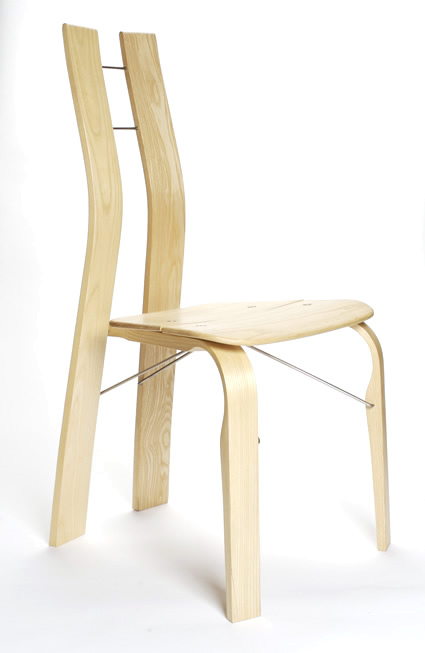
- Araceli de la Parra: “Le sedie sono progettate come strutture completamente triangolate dove tutte le giunture possono essere perni che attuano una compressione“. Credo che questa peculiarità sia molto particolare e distintiva dei vostri progetti è cosi? Sembra che gli oggetti (soprattutto le sedie) siano molto flessibili, è questa una componente importante del loro comfort?
- Araceli de la Parra: “The chairs are designed as fully triangulated structures where all the joints can be pivots and act in sheer or compression.” I think this is very unique to your designs, would you agree? It seems the pieces (specially chairs) give a lot of room for play and flexibility, is this a key component in making them comfortable to sit on?
David Colwell: Sì, credo che i benefici della triangolazione siano particolarmente rilevanti alle strutture in legno perché le giunture sono la parte più debole e non mantengono la loro angolatura molto bene, specialmente se soggette a carichi in movimento com’è il caso di sedie e tavoli. Nelle strutture triangolate la forza sta nella geometria. La debolezza di questa geometria, solitamente è che risulta molto rigida e così incapace di assorbire colpi ed urti, questo è un particolarmente rilevante per le sedie. Ma sé almeno uno dei lati del triangolo è curvo e composto da un materiale resistente come il frassino, le giunture si ammorbidiscono e questo problema viene risolto. Il risultato è una sedia robusta ma leggera ottenendo così le caratteristiche più importanti. La flessibilità può incrementare molto il comfort di una sedia, è incredibile ma vero!
David Colwell: Yes, and the benefits of triangulation are particularly relevant to wooden structures because the joints are much the weakest parts and are not good at maintaining their angle, especially where they are subjected to moving loads as with chairs and tables. In triangulated structures, the strength is in the geometry. The down side of triangulation is normally that they are too rigid, making them poor at absorbing shock, this is particularly relevant to chair, but if at least one of the sides of the triangle is curved and made from a resilient material like ash, and the joints are not too rigid, this problem is overcome. The result is very strong and light, just what is needed in a chair. The flexibility can greatly increase a chair’s comfort.
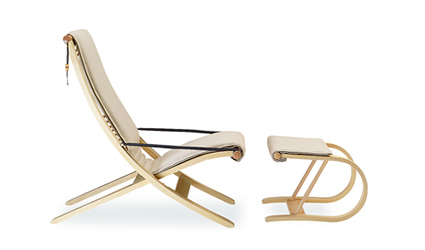
- Araceli de la Parra: “Un ottimo design è quello che visualizza un miglior domani” Cosa significa per te questa visione?
- Araceli de la Parra: “Really good design is about visualizing a better tomorrow”. What is this vision for you?
David Colwell: La ricchezza di senso comune risponde alle innumerevoli sfide che affrontiamo, dai cambi climatici, l’obesità infantile, al rialzo del petrolio, alla popolazione nei carceri, per nominarne solo alcune, raramente attuiamo la scelta intelligente.
Siamo arrivati ad un punto molto particolare della nostra evoluzione e storia umana (come sempre accade ma proprio ora in particolare). Abbiamo sviluppato un sistema molto efficiente per generare ricchezza (ma ha fallito nel trovare un modo equo per distribuirla) che significa utilizzare vaste quantità di petrolio e tanti derivati minerali per generare energia, quasi tutti di breve e a volte brevissima durata. Siamo giunti fin qui grazie al design, è stato il lavoro di una vita delle tante generazioni che si sono susseguite. Adesso stiamo confrontandoci con i contro di questo sistema. Stiamo finendo i materiali e l’energia sottopagata, cerchiamo di smaltire tutta la spazzatura che gettiamo via, per non parlare del debito che abbiamo generato per ottenere tutto questo e poi cosa succede quando la popolazione dei paesi in via di sviluppo (fortemente incoraggiati da chi ha già attuato un piano economico-sociale di questo tipo) vogliono realizzarlo anche loro?!
- Esistono 2 approcci alla sostenibilità:
Uno è quello di andare avanti il più possibile come prima, con i consumi in crescita ma dal punto di vista dei grandi produttori con un cambio radicale nel rapporto con il consumatore e la materia prima, questo; questa possibilità è illustrata nel modo più sofisticato dalla scuola di pensiero “Cradle to Cradle”, www.mbdc.com, dove l’energia è derivata dal sole (come tutto lo è in effetti) utilizzando il fotovoltaico. Quindi non stai comprando le tue scarpe da Nike ma stai ‘noleggiando’ i materiali e lo stile da loro, loro le ricicleranno e noleggeranno nuovamente nel loro stile il anno prossimo. Tra le aziende che hanno lavorato con questa idea sono, Nike, Herman Miller, (d’interesse a noi designer di mobili in questo settore) e… Monsanto! Il nostro ruolo in questo scenario è di essere buoni consumatori, continuare a comprare (o noleggiare) più cose possibili e presumibilmente entrare nelle banche e fare più debiti.
L’altro approccio vero una possibile sostenibilità è rappresentato da un altro gruppo di persone che vede questo strumento di crescita economica come indesiderabile, ma più puntualmente non perseguibile. Per cominciare trasportare ‘cose’ in giro per il mondo, trattasi di cibo, di macchine o qualsiasi cosa d’altro, in grandi quantità richiede moltissima energia e avendo metà del globo coperto da consumatori e metà da produttori a lungo termine il sistema diventa insostenibile. Questo gruppo vede le multinazionali come parte del problema cosi come inevitabilmente parte della soluzione. In Inghilterra sul Forum del Futuro (www.forumforthefuture.org.uk) ad esempio, troviamo l’incoraggiante l’utilizzo della bicicletta come mezzo di trasporto urbano, non so se è il modo più veloce per muoversi in una città ma è il più neutrale nelle emissioni di CO2, gratuito, favorisce una buona salute ed apre un mercato ai negozi di biciclette e per i caffè sui marciapiedi, con larghe tende per riparare dalla pioggia. Io faccio parte di questo ultimo gruppo … mi sembra molto più divertente.
Per tornare alla tua domanda: “Un migliore domani?” Quando sono ottimista e spesso lo sono, vedo un’economia dove lo sforzo e l’inventiva vengono remunerate; ma non è sufficiente. Dovremmo cercare attività economiche che danno una ampia gamma di benefici oltre il profitto. In modo da ottimizzare gli effetti che si realizzano di una attività che si pratica, piuttosto che massimizzarne soltanto una. A me piacerebbe vedere il potenziale delle persone realizzato e remunerato giustamente. Correggere il bilancio equilibrando destrezza e capitale investito potrebbe essere una soluzione efficace.
Nei miei prodotti, i materiali di cui sono composti, come il frassino, aiutano a sostenere l’economia rurale locale. Il frassino sorprendentemente è molto più resistente se cresciuto velocemente. Infatti il miglior materiale proviene da alberi che hanno 30 anni, un ovvio beneficio per il selvicoltore. In termini ambientali il frassino assorbe molto più carbonio di qualsiasi altro albero, (insieme all‘abete di Douglas, un legno molto utile anche questo). L’utilizzo di materia locale quindi riduce l’energia impiegata nei trasporti. La piegatura del legno avviene grazie al vapore che lavora partendo da un materiale immaturo fino a raggiungerne uno più maturo e piegato in un colpo solo. Questo tipo di piegatura richiede molta meno energia delle procedure tradizionali essicanti in un forno. La strumentazione è fatta per lo più in casa e il processo richiede solamente una buona dose destrezza ma una volta che ti riesce, non è molto difficile, diventa un metodo veloce e produce un buon profumo oltre a darti fare un buon esercizio fisico. Ed infine l’energia richiesta per l’intero processo può essere prodotta dagli scarti di legno.
Fiduciosamente, per l’utente (odio la parola “consumatore”) le sedie sono molto leggere, robuste ed estremamente confortevoli e se ti piace “quel genere di cose e di design”, sono belle, raffinate … senza ironia. Durano finché vuoi che durino e finalmente sono un legno di prima classe … per il camino. Non c’è nulla di nuovo in queste sedie, soltanto una miscela di materiali diversi ma devono esserci enormi quantità di soluzioni per risolvere tutti i tipi di problemi là fuori. É soltanto questione di cercarle. Riconoscerle quando le vediamo e in un contesto economico che le incoraggino. Alcune di queste soluzioni come vedremo saranno imposte dal rialzo del petrolio.
David Colwell: There is a wealth of common sense answers the myriad challenges we face, From climate change, childhood obesity, peak oil, the prison population, to name a few. We rarely pursue the intelligent choice.
The point we have reached in our evolution is unique (as it always is of course, but now particularly so). We have developed a very efficient system of generating wealth (but failed to find an equitable way of distributing it ) which involves using huge quantities of fossil fuel derived energy, and a great many mineral derived materials, mostly intended for a short, sometimes very short, life. We got here by design, it has been the life’s work of many generations. We are now coming to terms with the down sides. Running out of cheap energy and materials, getting rid of the junk that we throw away, the debt we have incurred to buy the stuff and what happens when everyone else in the world ( with a lot of encouragement from those who have ) wants to do it too.
There are broadly two approaches to sustainability. One is as far as possible to carry on as usual with growing consumption, but with, from a big producers perspective, radical change in their relationship with the consumer and the materials, this is illustrated at it’s most sophisticated , by “Cradle to Cradle” school of thought, www.mbdc.com, where energy is derived from the Sun ( as it all is anyway ) using Photo-Voltaics. Then you are not so much buying your trainers from Nike, you are leasing the materials and style from them and they will recycle them, and lease them again to us in next years style. Amongst the corporations signed up to the idea are, Nike, Herman Miller, ( of interest to the furniture designers in our midst ) and …. Monsanto!. Our role in this scenario is to be good consumers, keep on buying (or leasing) more of the stuff, and presumably getting into banking or more dept.
The other approach, represented by a diverse group who see the blunt tool of continuous economic growth as being undesirable, but more to the point, un- achievable . For a start carting stuff, be it food or cars around the globe in very large quantities, is very energy intensive , and having one half of the globe being largely consumers and the other half being producers is, in the long term, unsustainable. They see Multi-National corporations as part if the problem as well as inevitably part of the solution. In the UK, Forum for the Future, <www.forumforthefuture.org.uk> is an example. The encouragement of cycling as a means of urban transport is the kind of solution they would claim, not only is it the fastest way to getting around a city, it’s carbon neutral, free and promotes better health and is very good for cycle shops and street side cafes with big rain proof awnings. I’m with these guys, they sound much more fun.
To return to your question: A better tomorrow? When I’m feeling optimistic, which is much of the time, I see an economy where the effort and inventiveness is rewarded, but isn’t 10 times the average enough? We should be looking for are economic activities that deliver a wide range of benefits besides profit. To optimise the effects of an activity rather than maximising only one. I would like to see peoples potential realised and rewarded fairly. Some redress in the balance between skilled dexterity and capitol invested would greatly help here.
In my own products, the material, local ash, helps support a local rural economy. Ash, surprisingly has much more strength when fast grown. The best material comes from trees about 30 years old, an obvious benefit to the forester . Environmentally Ash absorbs more atmospheric carbons than any other tree, ( with Douglas Fir, another very useful timber). Use of a local material reduces energy in transport. Steam bending takes the material unseasoned, and produces a seasoned, bent component in one hit. Steam bending requires much less energy than conventional kiln drying. It’s a technique that sits somewhere between a pole lathe an an injection moulding machine. The tooling is made in house from mostly wood, it takes skill, but when you get it right, not too difficult, it’s quick, it smells good and it’s good exercise. Energy required can be generated from burning wood waste.
Hopefully, for the user, (I cant get away with that, The Consumer) the chairs are very light, both physically and visually, they are supremely comfortable, and if you like that sort of thing, they look great, refined and no irony. They last as long as you want them to and finally they make first rate fire wood. There is nothing new here, just a different mix, but there have to be masses of solutions to all sorts of problems out there, it’s just a case of looking for them, Recognizing them when we see them and an economic environment that encourages them. Some of this will be forced on us by peak oil.
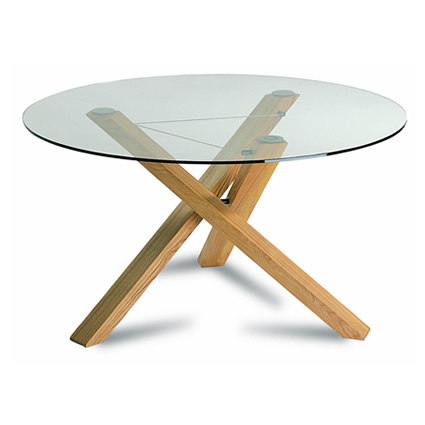
- Araceli de la Parra: Il frassino è il legno che preferisci, perché è resistente, auto propagante in natura, niente linfa (uguale a meno scarti), è locale e cresce bene, si adatta facilmente alla piegatura a vapore ed è abbondante e non eccessivamente costoso. Il frassino che utilizzi è cresciuto in maniera sostenibile?
- Araceli de la Parra: Ash is your wood of choice because it is tough, self seeding, no sap wood (less waste), it is local and grows well, it is good for steam bending, it is plentiful and not expensive. Is the ash you use certified grown sustainable?
David Colwell: Alcuni sono certificati FSC ma la risorsa è cosi locale e di tale quantità nelle foreste locali che sono personalmente assicurato conoscendo la zona e il selvicoltore locale.
David Colwell: Some are FSC certified, but the source is so local and so much of it is forest thinnings that I am personally assured in knowing the area and the forester.
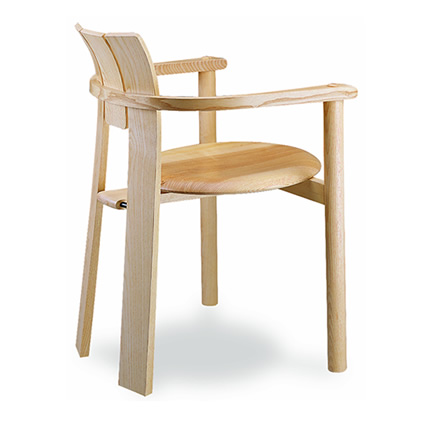
- Araceli de la Parra: Come dici tu la sostenibilità, in parte per te è “realizzare oggetti che siano un piacere possederli, perché soddisfano in maniera pratica e visiva un compito. L’aspetto più importante di un oggetto sostenibile così è0 la voglia delle persone di sostenerlo.” Ora correggimi se mi sbaglio ma questo punto è gran parte fondamenta del tuo processo progettuale. Quando progetti pensi alla vita dei tuoi oggetti quando finiscono la loro vita utile?
- Araceli de la Parra: As you state, sustainability in part for you is “making things that are a delight to own, because they satisfy practically and visually and don’t let you down. The most important aspects of a sustainable object is peoples wish to sustain it.” Even though this is a great part of your design process, and please correct me if I’m wrong (making things that are made to last a long time) do you think about the afterlife of your products?
David Colwell: Sì, ho molti vecchi prototipi e li brucio nella mia cucina una volta che ho tolto tutte le parti in metallo per riciclarle. Non ho trovato ancora nessun utilizzo per il tessuto o per la schiuma, ma sto lavorando su un sostituto proprio su quest’ultima. Per quelli che non hanno una stufa a legna, i miei prodotti sono perfetti per bruciarli negli inceneritori municipali.
David Colwell: I do, and I have an awful lot of old proto types, and I burn them in my cooking stove, having removed the metal to recycle. I don’t yet have a use for the fabric and foam, but I am working in a foam substitute. For those who don’t have a wood stove, they are perfect for municipal incineration.
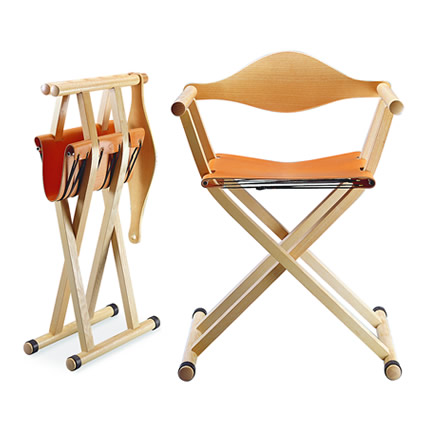
- Araceli de la Parra: Quali sono le finiture che utilizzi?
- Araceli de la Parra: What are the finishes on the furniture you make?
David Colwell: Utilizziamo cera d’olio proveniente da agricoltura biologica applicata a mano, questo serve come fattore di controllo e di qualità sul pezzo finito. Si guarda così l’oggetto accuratamente durante la finitura al sapone (come utilizzato da Fritz Jansen). La facilità di manutenzione diventa chiave per un design sostenibile ed è parte fondamentale della finitura stessa.
David Colwell: We use organic oil wax, hand applied. The hand application serves as quality control as well. We are looking closely at soap finish as used by Fritz Hansen. Ease of maintenance is part of the key to sustainability, and nowhere is it more important than the finish.
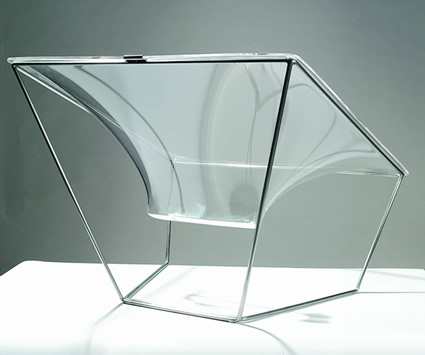
- Araceli de la Parra: Le considerazioni che riguardano il tuo design sostenibile hanno avuto un qualche impatto sul prezzo dei manufatti? In che modo e qual è il tuo target di mercato?
- Araceli de la Parra: Have considerations on sustainability impacted the price of you pieces? In which way? What is your target market?
David Colwell: Quello che ha avuto maggiore impatto sul prezzo del mio design sostenibile riguarda i volumi, sono bassi cosi come il mercato, sono manufatti costosi a confronto dei prodotti realizzati su larga scala ma come immaginerai sono di alta qualità e per questo hanno prezzo molto ragionevole visto che sono implicitamente semplici. A mio avviso nel futuro non c’è motivo per il quale non dovrebbero andare in produzione su larga scala e sarà quello il mercato dove apparterremo un giorno.
David Colwell: What has impacted mostly on the price is that it isn’t mainstream, it’s volumes are small as is the market, it’s expensive by high street standards, but as high quality studio pieces, they are remarkably good value because they are inherently simple. There is no reason why they couldn’t go into volume production, in my view of the future, that’s where they belong.
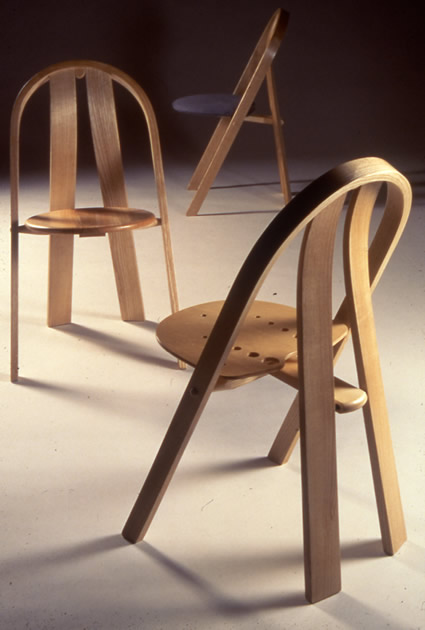
- Araceli de la Parra: I tuoi mobile sono fatti su commissione? Come è gestita in questo caso la produzione e la distribuzione?
- Araceli de la Parra: Are your pieces made to order? How do you handle production/distribution?
David Colwell: Sì, sono realizzati su commissione e il tempo di consegna è di circa 6-8 settimane. La produzione è per lo più realizzata da Simon Moorhouse, che ha lavorato per me 20 anni fa a circa 20km dallo studio. Il fatto che i pezzi siano stampati fa si che l’investimento vada nella attrezzatura e negli stampi che permettono una produzione efficiente ed in piccole quantità dai 20 ai 100 e più pezzi. La distribuzione è diretta: dal laboratorio all’utente.
David Colwell: Yes, made to order with a delivery time of 6 to 8 weeks. Production is mostly done by Simon Moorhouse, who worked for me 20 or so years ago, about 10 Kilometres from the studio. Being moulded, the investment is in tools and jigs which allow for efficient production in small batches of between 20 and 100+ . Distribution is direct from the workshop to the customer.
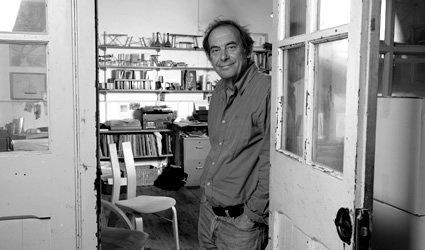
[ Links utili e approfondimenti ]
- Trannon Studio Llawr Y Glyn Caersws Powys SY17 5RH United Kingdom
tel +44 (0)1686-430434 info@davidcolwell.com





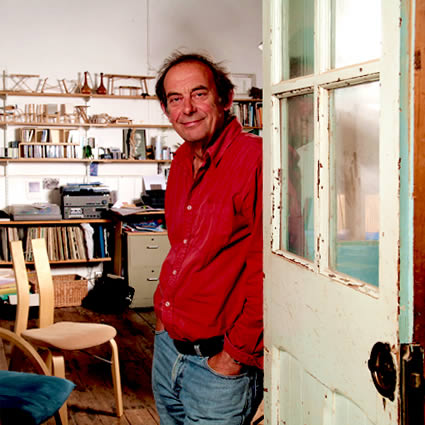





















Nessun commento
Attualmente non ci sono commenti per Ecodesigner: David Colwell il Frassino come Acciaio. 2 Sostenibilità possibili fra potenziale creativo e giusta economia. Perchè non ne aggiungi uno?